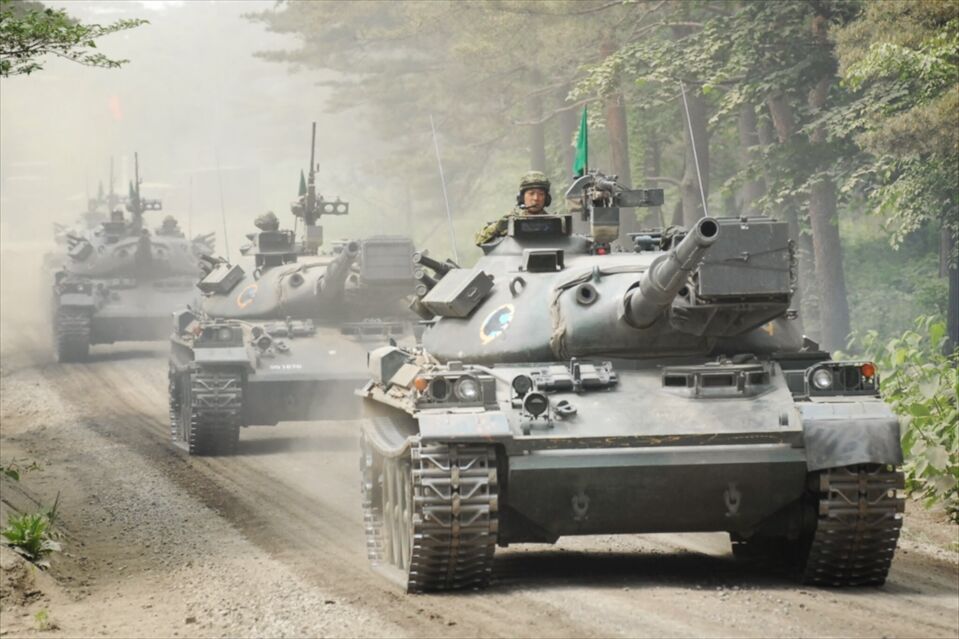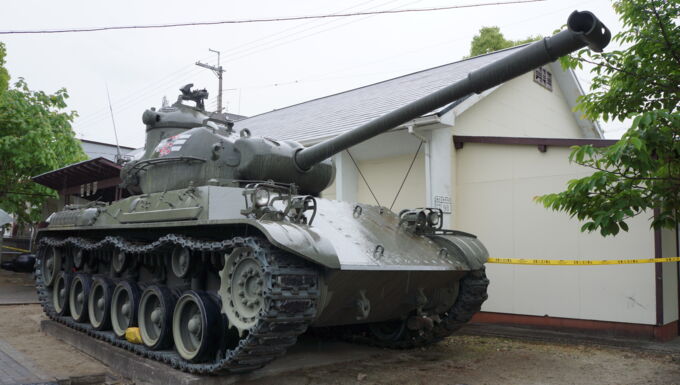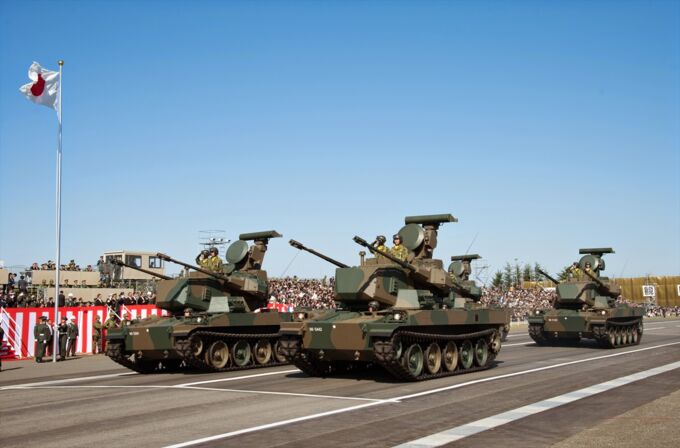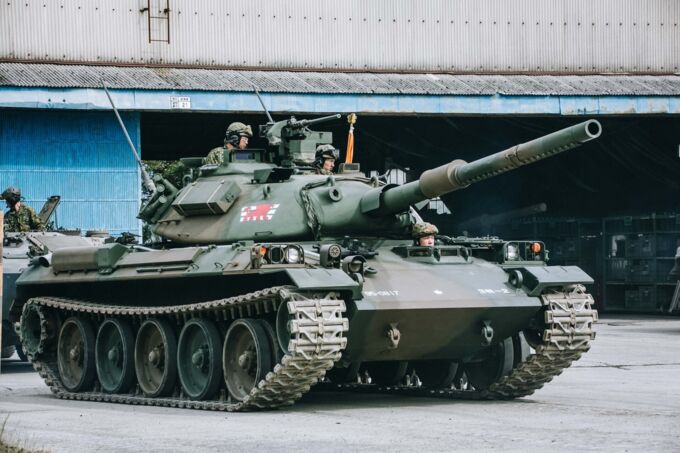The Type 74, or 74式戦車 (Nana-yon Shiki Sensha) is a Japanese main battle tank that began development at the height of the Cold War. Since entering service in 1975, over 800 were built, the most numerous of any post-war Japanese tank, and only recently was withdrawn from service in 2024.
Development
First deployed in 1961, the Type 61 was Japan’s first post-war tank. It was armed with a 90 mm main gun and would gradually replace the M4A3E8s supplied by the United States over the next decade. However, in the early 1960s, the T-62 began to enter service with the Soviet Army, utilizing a new 115 mm smoothbore gun, and Japanese Army officials had concerns about the capability of the Type 61 as Soviet tanks improved. Thus, in 1963, engineers at Mitsubishi began to look into developing a new tank. According to an outline by the Japan Ground Self-Defense Forces, it was to carry a 105 mm gun, a strong engine, and it was to weigh 35 tons due to this being the maximum weight of Japanese rail transports at the time. However, the JGSDF had reservations, as it was debating between introducing a new tank, or simply upgrading the Type 61. However, in 1965, it was decided to go forward with developing a new tank.
In December of 1965, all essential design features were decided upon. It was to feature a laser rangefinder and an advanced Fire Control System. Its armament was to be the 105 mm L7, a popular gun at the time, with the more compact breech produced domestically. The engine was one that had begun development even before the Type 61 entered service, the Mitsubishi 10ZF. A wooden mockup of what the vehicle would look like was made in March of 1968.
Special efforts were made to lower the tank’s height and create a low silhouette. Designers realized a hydropneumatic suspension would allow the tank to achieve this. In 1966, an experimental test bed known as STT was made to test a hydropneumatic suspension. A trial turret would be mounted on the rather boxy test bed, and trials would be carried out until 1969. The first two prototypes were made the same year testing of the STT ended, resulting in the STB-1 and STB-2.
These prototypes featured the 105 mm L7 gun as specified along with carefully calculated sloped armor. The designers initially had some difficulty mounting the L7 due to turret ring limitations imposed by the Japanese railway system, but with some internal adjustments, an acceptable width was achieved. STB-1 was fairly technically advanced for its time, featuring an autoloader and remote controlled 12.7 mm M2 machine gun, but this proved to be too expensive.
A further four prototypes designated STB-3 through STB-6 were created to reduce cost, with the latter being tested from October 1971 through February 1973. In May of 1973, the STB began production as the Type 74.
Modifications & Variants
After entering service, the Type 74 would undergo a variety of upgrades as time went by. For example, the image intensifier would be swapped for an infra-red imaging sight, and in the 1980s, its ammunition racks and FCS were modified to accept APFSDS rounds. This was known as the Type 74 (B). Further alphabetical variants were upgraded, with the (C) using a dark green and brown camouflage. The (D) variant introduced a thermal sleeve, the (E) had its FCS modified once more to use the Type 91 HEAT-MP round, and the Type 74 (F) had plates added to the front plate to fit a Type 92 mine roller. Besides tank variants, the Type 74 also spawned the Type 78 Armoured Recovery Vehicle, the Type 87 self-propelled anti-aircraft gun, and Type 91 Armoured Vehicle-Launched Bridge.
The first, and only, major upgrade to the Type 74 was with the Type 74 (G). It featured a thermal imaging sight, laser warning receiver, and improved transmission. A prototype was completed in 1993, followed by four additional production vehicles. Unfortunately though, these were the only ones ever made due to budget cuts from the end of the Cold War. This was reasonable, as to upgrade a Type 74 to (G) standard, it cost approximately 100 million yen. By this time however, Japan was introducing the new Type 90 tank in increasing numbers. The Type 90 featured a 120 mm smoothbore gun, composite armor, an autoloader, better engine, and had overall improved performance.
The only other upgrade the tank received beyond this was when the 1st Tank Battalion modifying a few of its Type 74s to have additional NERA plates in 2002, but this never went anywhere. The Type 74 would soldier on until March of 2024, when all vehicles officially exited service, replaced by the more modern Type 90 and Type 10 tanks, as well as the Type 16 Maneuver Combat Vehicle.






